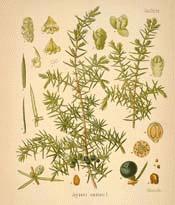
Moderators: Elvis, DrVolin, Jeff
Scurvy
From Wikipedia, the free encyclopedia
Scurvy
Scurvy (N.Lat. scorbutus) is a deficiency disease that results from insufficient intake of vitamin C, which is required for correct collagen synthesis in humans. The scientific name of vitamin C, ascorbic acid, is derived from the Latin name of scurvy, scorbutus. Scurvy leads to the formation of liver spots on the skin, spongy gums, and bleeding from all mucous membranes. The spots are most abundant on the thighs and legs, and a person with the ailment looks pale, feels depressed, and is partially immobilized. In advanced scurvy there are open, suppurating wounds and loss of teeth.
Scurvy was at one time common among sailors, pirates and others who were on ships that were out to sea longer than perishable fruits and vegetables could be stored and by soldiers who were similarly separated from these foods for extended periods. It was described by Hippocrates (c. 460 BC–c. 380 BC). Its cause and cure have been known in many native cultures since prehistory. For example, in 1536, the French explorer Jacques Cartier, exploring the St. Lawrence River, used the local natives' knowledge to save his men who were dying of scurvy. He boiled the needles of the arbor vitae tree (Eastern White Cedar) to make a tea that was later shown to contain 50 mg of vitamin C per 100 grams.[1][2] However it was a Scottish surgeon in the British Royal Navy, James Lind who first proved it could be treated with citrus fruit in experiments he described in his 1753 book, A Treatise of the Scurvy.....
Pine Needle Tea
Nature's Remedy Loaded with Vitamin C
by Leon Toille
It has been known for hundreds of years that a tea or broth made from hot water (do not boil) with 1/2 cup of pine needles is the cure for scurvy, and some varieties of pine produce a tea with more Vitamin C than is contained in 6 lemons! Let the tea steep for about two hours at least. Most pine needle teas are surprisingly not bitter...but if your tea a little bitter for your taste, add a little honey, preferably unpasteurized.
[...]
Almost any variety of pine needles will work - when they are fresh and green (don't dry them out). Scientists also say there are many medicinal ingredients in pine needles besides Vitamin C. I have also used fresh green cedar "leaves" as well.
Brighid_Moon wrote:Haha! Yup! Gin!

Traditional Ethnic Uses
Juniper Berries are used in Northern Europe and the United States in marinades, roast pork, and sauerkraut. They enhance meat, stuffings, sausages, stews, and soups.
The berries are used for the production of the volatile oil which is a prime ingredient in Geneva or Hollands Gin, upon which its flavour and diuretic properties depend.
[...] [In this section it tells about ripened berries and how to make the oil]
Oil of Juniper is given as a diuretic, stomachic, and carminative in indigestion, flatulence, and diseases of the kidney and bladder. The oil mixed with lard is also used in veterinary practice as an application to exposed wounds and prevents irritation from flies.
Spirit of Juniper has properties resembling Oil of Turpentine: it is employed as a stimulating diuretic in cardiac and hepatic dropsy.
The chief use of Juniper is as an adjuvant to diuretics in dropsy depending on heart, liver or kidney disease. It imparts a violet odour to the urine, and large doses may cause irritation to the passages. An infusion of 1 oz. to 1 pint of boiling water may be taken in the course of twenty-four hours.
In France the berries have been used in chest complaints and in leucorrhoea, blenorrhoea, scrofula, etc. They are nut [sic] given in substance.
The oil is a local stimulant.
[...]
---Other Species---
Gum Juniper is a name of Sandarac, theresinous product of Thuja articulata or Callitris quadrivalvis.
From dry distillation of the branches and heartwood of Juniperus oxycedrus, the Prickly Cedar or Medlar Tree, a large shrub, 10 to 12 feet high, with brownish-black berries the size of a hazel nut, native of the south of France, and occasionally from that of J. communis, is obtained the tarry, empyreumatic oil known as Cade Oil, or Juniper Tar Oil, used in the treatment of the cutaneous diseases of animals in France and other Continental countries, and for most of the purposes of Oil of Turpentine. It is a readysolvent for chemical drugs and is used externally for chronic eczema as oil, ointment, and soap.
[...] the American Juniper of Bermuda, known also as Red Cedar and Pencil Cedar, is only an ornamental tree in Britain, introduced in 1864, and growing 40 to 50 feet high. [...]
Red Cedar Oil is an article of commerce, obtained from the wood by distillation from the chips and waste wood, from 15,000 to 20,000 lb. of oil being annually produced in the United States. It is used in the preparation of insecticides and also in making liniments and other medicinal preparations and perfumed soaps. It is used generally in perfumery and was formerly one of the principal constituents of the popular Extract of White Rose.
The berries in decoction are diaphoretic and emmenagogue, like those of Common Juniper, and the leaves have diuretic properties.
chiggerbit wrote:Are the juniper berries anesthetic or do they actually promote healing, Seventhsonjr?
Users browsing this forum: No registered users and 5 guests